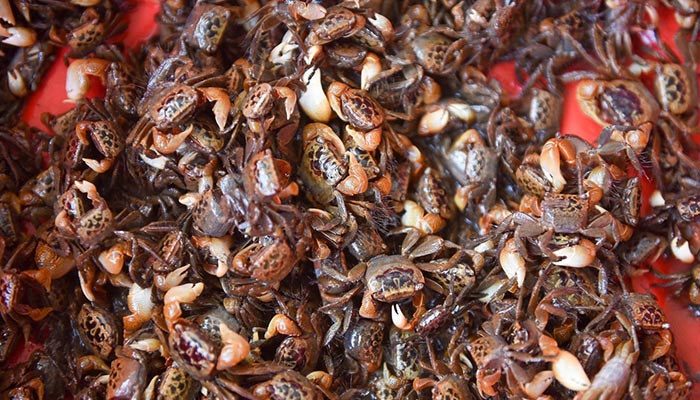Binh Luc’s mam cay
Ha Nam is not only renowned for its breathtaking landscapes, ancient temples, and sacred pagodas but also for a special type of fermented fish sauce with a pungent, spicy, and fragrant taste known as "mam cay."
"Eating beef, you'll salivate,
Eating mam cay, you'll savor."
Eating mam cay, you'll savor."
These verses are undoubtedly familiar to every child of Ha Nam. Regardless of how far they may be from their hometown, despite enjoying numerous delicious dishes, the locals cannot forget the familiar taste, the flavor of the river's alluvial soil, and the distinctive pungent aroma of their hometown's mam cay. Once tasted, it is an unforgettable experience. Mam cay can be considered the pride of every Ha Nam native.

According to the people of Ha Nam, after the first summer rain, the anchovies leave their caves, usually around April or May, marking the beginning of the anchovy season. However, these anchovies are often thin, with less meat, and after a period known as "hibernation," they emerge from their hiding places to search for food. By the flood season in October, every anchovy turns red, grows larger, and becomes very tender. While anchovies are found in various areas with shallow water in Ha Nam Province, such as Thanh Liem, Binh Luc, Kim Bang, the craft of making mam cay thrives most in Binh Luc District. Mr. Nguyen Van Thanh, a seasoned mam cay artisan for over a decade in Trinh Xa commune, Binh Luc District, shares, "Making mam cay may seem simple, but to achieve a rich, flavorful, and delicious taste, it requires a lot of skill."
Indeed, creating the distinctive, delicious flavor of mam cay involves many meticulous and sophisticated steps. The first step is selecting the anchovies. Makers must choose the freshest and best - quality anchovies. After catching them from the fields, the anchovies are cleaned and ground finely in a stone mortar. During the grinding process, salt is added to achieve the right level of salinity. Everything is then placed in a pottery jar along with crushed ginger or galangal and mixed with boiling water before letting it cool. The mixture is then poured into the jar, tightly covered with a cloth, and left to sunbathe for a day before being buried underground. Once the solution turns cloudy and the anchovies float evenly, the mam cay is ready. Particularly, the longer mam cay is preserved, the more it develops a fragrant, enticing aroma. The finished product has an attractive color and a complex flavor profile, combining the saltiness of the salt, the richness of the anchovies, and the warmth of ginger.

Mam cay is perfect for dipping boiled meat, boiled vegetables, stir - frying, and cooking various dishes.
Enjoying mam cay, people often eat it directly or with fresh water spinach and garlic shoots. A plate of vibrant green water spinach, dipped in a mixture of mam cay and a bit of chili garlic, is sure to delight your taste buds. Even after devouring the entire pot, the lingering craving for more remains.
Currently, the craft of making mam cay in Hà Nam is thriving, with over 300 households engaged in mam cay production in the district. Thanks to its distinctive and delicious flavor, Binh Luc's mam cay has become a unique product. Many tourist groups passing through Ha Nam never forget to stop and purchase Binh Luc's mam cay as souvenirs.
However, in the past, countless flocks of birds flew over the straight fields, and anchovies were abundant. Nowadays, with the construction of embankments to control flooding and the environmental pollution caused by chemical fertilizers, anchovies have become scarce. Therefore, environmental protection of the water areas needs special attention from the district authorities, with timely and reasonable solutions and policies to preserve and further develop the mam cay craft locally.
If you have the opportunity to visit Ha Nam, don't forget to buy some mam cay as gifts for your friends and family!

.jpg)








